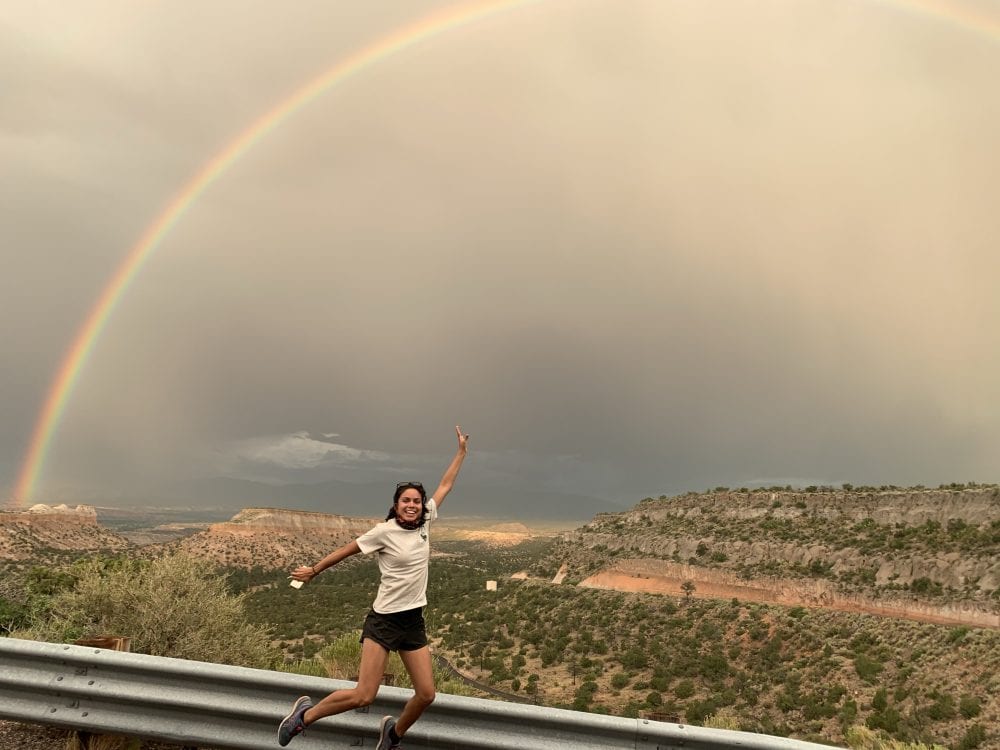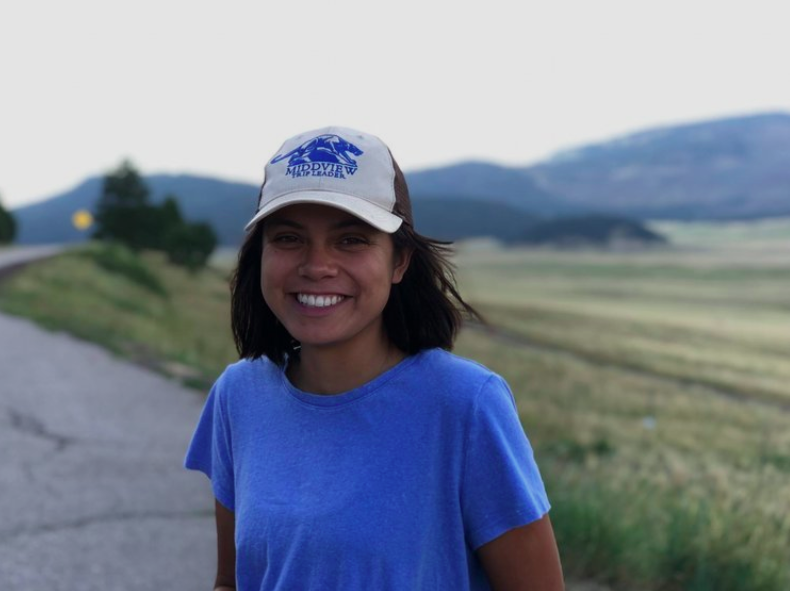Bianca Gonzelz is the December New Mexico Naturalist in the monthly New Mexico Naturalist series from the Pajarito Environmental Education Center. We hope you’ll enjoy learning about her, her thoughts on the outdoors, and her work in this interview.
Location: Los Alamos, NM
Occupation: Land Planner at the New Mexico State Land Office
Favorite Place in New Mexico: Rio Grande Del Norte National Monument and Bandelier National Monument
Favorite New Mexico Critter: Beavers and Roadrunners
Bianca Gonzalez started loving nature in her childhood. She was born and raised in Taos, New Mexico to Mexican-American parents and fondly remembers picking pinyon nuts annually with her father and exploring the outdoors through field trips with the nonprofit organization Rivers & Birds. On those field trips, students would go outside weekly and explore wetlands, hunt for macroinvertebrates, and learn about the ecosystems around them.
“That experience is one of the reasons why I love nature and I wish that was baked into schooling for all kids,” she says.
Bianca recently started a new position with the State Land Office as a Land Planner. Prior to that, she worked as a Research Assistant at Bandelier National Monument and for the Smithsonian.
Tell us about a formative experience in nature from your childhood.
In addition to my experiences with Rivers & Birds, I was lucky to grow up near a wetland, called Fred Baca Park. My siblings and I would walk around the trails and explore. We’d cross a field and go under fences to get to these trails and little stream systems.
New Mexico is so dry, and I never realized how lucky I was to live near water until later in my life. A lot of people who grew up here didn’t get to interact with water as much as and I did, which was a really formative experience.
How would you define a “naturalist”?
My idea is someone that interacts with nature in any sort of capacity. I think kids are naturalists, too.
I love being outside — I love going to the dog park and looking at the mushrooms that have sprouted in the fields overnight and watching my dog knock some of them down. I think curiosity and close observation of nature makes someone a naturalist. I have to say, I think even if you enjoy books about nature, you’re a naturalist. My favorite childhood book is the second book of the Hatchet series. I loved learning about how the main character survived in the winter, and I wasn’t an outdoorsy person then. So there are different ways of interacting with nature that make people naturalists, and that can be indoors, too.
What word makes you feel most at home when you think about nature?
Probably “the land.” To me, it is more encompassing because, coming from the Range Science background that I have, I draw very strong distinctions between cultivated land and uncultivated land. “The land” incorporates all of it. We are not outside of the ecosystem, we’re a part of that system. To me, “the land” definitely represents more of an encompassing way of looking at things. “Nature” makes me think of an environment that has less human impact.
How do you connect with nature in your life and work today?

I am a runner. I really love running on the trails in Los Alamos and I make an intentional effort to go outside about 10 times per day. I take my dog on lots of walks, and on the weekends I go climbing in the Jemez or in White Rock. For me, climbing is a different way to interact with the landscape. When you look down at the Rio Grande from White Rock Canyon, you can see how small the river is compared to the canyon. It’s great to just hang on a cliff edge, after my hardwork has gotten me there, and appreciate the life source of this area.
I just started a job with the State Land Office about six weeks ago. It’s a brand new position and I’m excited that I can help pioneer our planning program. The idea behind it is to manage the leasing activities on the State Trust Lands — from business leasing to livestock grazing to Oil and Gas and Renewable Energy leasing, the list goes on — in a more unified way and with intent to steward the lands and lessen environmental impacts for future generations. One of Commissioner of Public Lands Stephanie Garcia Richard’s goals is to diversify the portfolio of the State Land Office. This means that I get to spend time thinking about different revenue sources and how to incorporate our existing revenue generating activities with conservation efforts. I’m excited to put my boots on the ground while doing this long-term planning on the land.
What are your hopes or concerns for the future for nature in New Mexico?
We’re in a mega drought in New Mexico and we really have to think about how we’re going to protect and conserve our water resources. That’s something that I’m going to be working on indirectly for my job, but also it’s a bigger issue affecting many agencies and people across the state. One of our new realities in this drier hotter climate is the threat of large scale catastrophic wildfires — which we are already experiencing. We all have to do our best to conserve biodiversity and protect ecosystem hotspots that may be able to buffer the worst effects of climate change. Proper foresight and planning can make a really big difference. I’m hoping the future generations in New Mexico, including myself, will be cognizant of the limits we face and think about how we can live within our water constraints.
What are your hopes for the next generation of New Mexico children?
When I go to Rio Rancho to visit my nieces and nephews, I see how they live in a desert and a fragmented landscape. My hope is that there will be ways to get children outside in New Mexico — maybe through outdoor education offered by public schools. I think developing appreciation for nature in children is so important to conserving resources.
If you’d like to connect with Bianca, you can email her at bianca.glez94@gmail.com, Tweet at her at @bianxgzlez, or connect with the New Mexico State Land Office at www.nmstatelands.org.
New Mexico Naturalists is a monthly series produced by the Pajarito Environmental Education Center (PEEC) to highlight the work and experiences of people throughout the state that are making meaningful connections with nature and wildlife. Read our previous New Mexico Naturalist profiles here.
Have a suggestion for a naturalist that we should feature in the future? Email publicity@peecnature.org to let us know! PEEC is the non-profit organization that operates the Los Alamos Nature Center.

